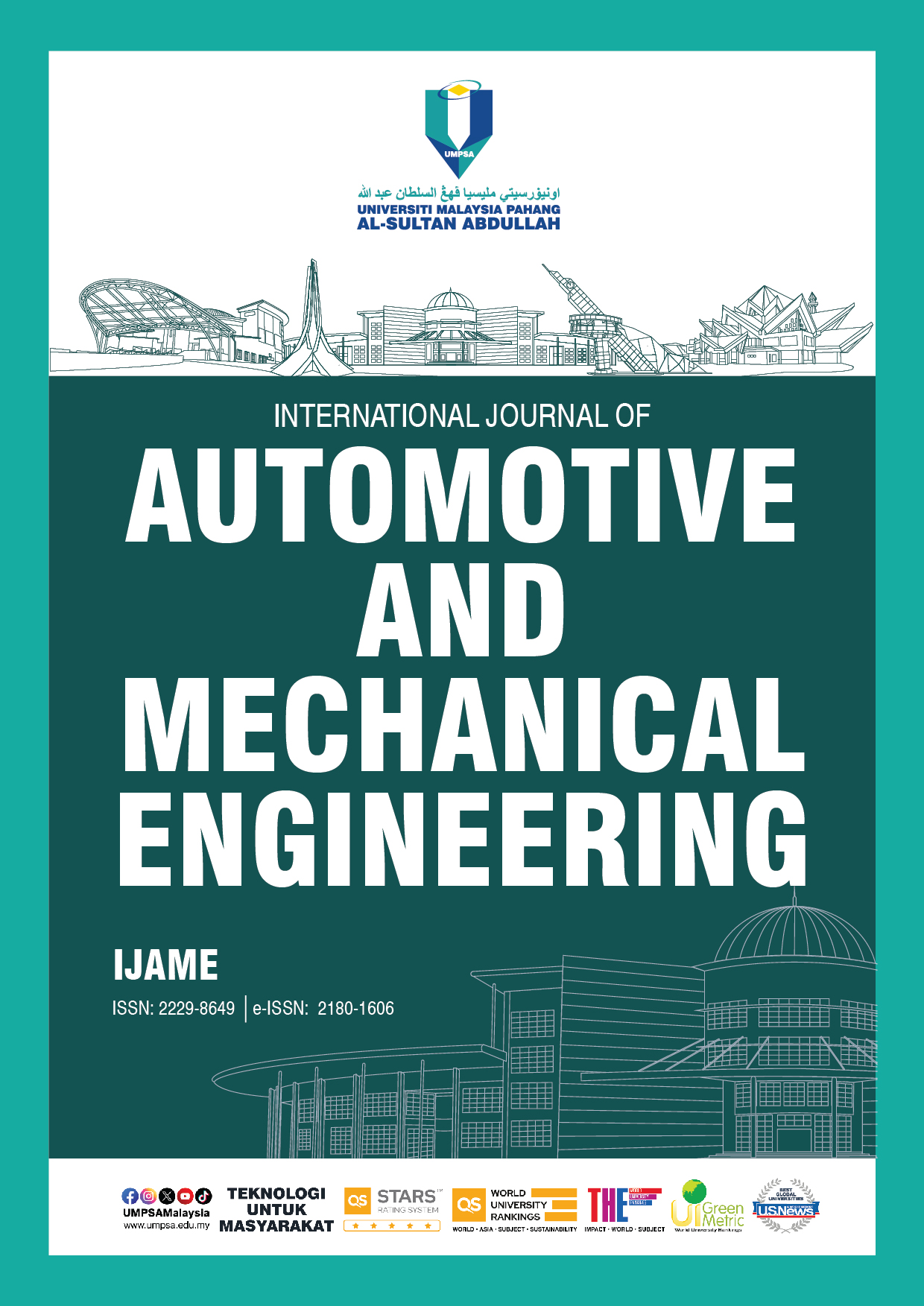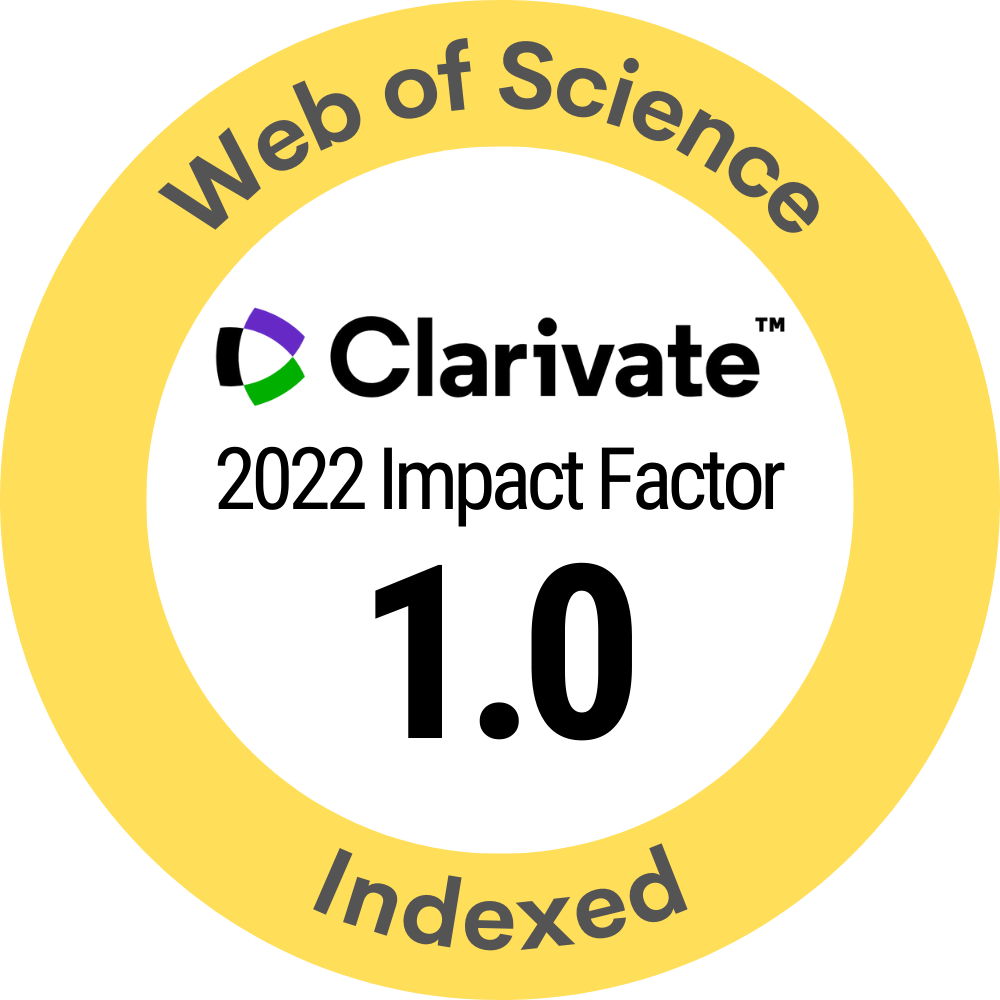Hydrogen as a Clean Fuel: Storage Technologies and Associated Thermal Challenges
DOI:
https://doi.org/10.15282/ijame.22.2.2025.20.0957Keywords:
Hydrogen storage, Metal hydride, Heat and mass transfer, NanofluidAbstract
Hydrogen has emerged as a clean, renewable, and non-toxic alternative energy carrier with the potential to support a sustainable energy future. Despite its advantages, one of the major obstacles to widespread adoption is the challenge of efficient and safe storage. This review critically examines hydrogen storage technologies—including gaseous, liquid, and solid-state methods—focusing on the thermal management issues associated with each. The study methodology involved a comprehensive review of current scientific literature, government reports, and technical papers, particularly focusing on studies addressing heat transfer limitations and enhancement techniques in hydrogen storage systems. The analysis reveals that gaseous hydrogen storage suffers from high compression heat and limited density; liquid hydrogen faces challenges related to boil-off and cryogenic insulation, while solid-state storage—though safer and denser—encounters difficulties due to low thermal conductivity and slow kinetics. Among the examined techniques, solid-state storage appears to be the most promising for practical use, especially when integrated with thermal enhancement strategies such as fins, metal foams, and expanded graphite. The review highlights the need for hybrid approaches that combine multiple heat transfer augmentation methods and identifies nanoparticle-enhanced fluids as a promising direction for future research. Overall, this work provides an integrated perspective on the thermal barriers in hydrogen storage technologies and outlines potential pathways for performance improvement, supporting ongoing research and development in this field.
References
[1] M. Li, “World Energy 2014-2050,” 2014 [Online] http://peakoilbarrel.com/world-energy-2014-2050-part-3.
[2] S. Shafiee and E. Topal, “When will fossil fuel reserves be diminished?” Energy Policy, vol. 37, no. 1, pp. 181–189, 2009.
[3] M. H. Mahfuz, A. Kamyar, O. Afshar, M. Sarraf, M. R. Anisur, M. A. Kibria, et al., “Exergetic analysis of a solar thermal power system with PCM storage,” Energy Conversion and Management, vol. 78, pp. 486–492, 2014.
[4] D. Groppi, D. Astiaso, G. Lo, F. Cumo, and L. De Santoli, “Analysing economic and environmental sustainability related to the use of battery and hydrogen energy storages for increasing the energy independence of small islands,” Energy Conversion and Management, vol. 177, pp. 64–76, 2018.
[5] S. Xu and J. Liu, “Metal-based direct hydrogen generation as unconventional high density energy,” Frontiers in Energy, vol. 13, no. 1, pp. 27–53, 2019.
[6] M. Balat and H. Balat, “Recent trends in global production and utilisation of bio-ethanol fuel,” Applied Energy, vol. 86, no. 11, pp. 2273–2282, 2009.
[7] S. D. Patil and M. R. Gopal, “Entropy generation and its relation to heating and cooling requirements of a metal hydride hydrogen storage reactor,” International Journal of Hydrogen Energy, vol. 38, no. 31, pp. 13687–13693, 2013.
[8] M. Gökçek and C. Kale, “Optimal design of a hydrogen refuelling station (HRFS) powered by hybrid power system,” Energy Conversion and Management, vol. 161, pp. 215–224, 2018.
[9] R. Patel and S. Patel, “Renewable hydrogen production from butanol: A review,” Clean Energy, vol. 1, no. 1, pp. 90–101, 2017.
[10] A. Bhaskar, R. C. Muduli, and P. Kale, “Prediction of hydrogen storage in metal hydrides and complex hydrides: A supervised machine learning approach,” International Journal of Hydrogen Energy, vol. 98, pp. 1212–1225, 2025.
[11] J. Zhang, T. S. Fisher, P. V. Ramachandran, J. P. Gore, and I. Mudawar, “A review of heat transfer issues in hydrogen storage technologies,” Journal of Heat Transfer, vol. 127, no. 12, pp. 1391–1399, 2005.
[12] B. Sakintuna, F. Lamari-darkrim, and M. Hirscher, “Metal hydride materials for solid hydrogen storage: A review,” International Journal of Hydrogen Energy, vol. 32, pp. 1121–1140, 2007.
[13] F. S. Yang, G. X. Wang, Z. X. Zhang, X. Y. Meng, and V. Rudolph, “Design of the metal hydride reactors - A review on the key technical issues,” International Journal of Hydrogen Energy, vol. 35, no. 8, pp. 3832–3840, 2010.
[14] S. S. Murthy, “Heat and mass transfer in solid state hydrogen storage: A review,” Journal of Heat Transfer, vol. 134, pp. 1–11, 2012.
[15] A. Mazzucco, M. Dornheim, M. Sloth, T. R. Jensen, J. Oluf, and M. Rokni, “Bed geometries, fueling strategies and optimisation of heat exchanger designs in metal hydride storage systems for automotive applications: A review,” International Journal of Hydrogen Energy, vol. 39, no. 30, pp. 17054–17074, 2014.
[16] S. S. Mohammadshahi, E. M. Gray, and C. J. Webb, “A review of mathematical modelling of metal- hydride systems for hydrogen storage applications,” International Journal of Hydrogen Energy, vol. 41, no. 5, pp. 3470–3484, 2016.
[17] S. Shafiee and H. M. McCay, “Different reactor and heat exchanger configurations for metal hydride hydrogen storage systems- A review,” International Journal of Hydrogen Energy, vol. 41, no. 22, pp. 9462–9470, 2016.
[18] M. Afzal, R. Mane, and P. Sharma, “Heat transfer techniques in metal hydride hydrogen storage: A review,” International Journal of Hydrogen Energy, vol. 42, no. 52, pp. 30661–30682, 2017.
[19] L. F. Chanchetti, D. R. Leiva, L. I. Lopes de Faria, and T. T. Ishikawa, “A scientometric review of research in hydrogen storage materials,” International Journal of Hydrogen Energy, vol. 45, no. 8, pp. 5356–5366, 2020.
[20] J. Yao, Z. Wu, H. Wang, F. Yang, J. Ren, and Z. Zhang, “Application-oriented hydrolysis reaction system of solid-state hydrogen storage materials for high energy density target: A review,” Journal of Energy Chemistry, vol. 74, pp. 218–238, 2022.
[21] F. Gonzatti and F. A. Farret, “Mathematical and experimental basis to model energy storage systems composed of electrolyser, metal hydrides and fuel cells,” Energy Conversion and Management, vol. 132, pp. 241–250, 2017.
[22] I. Staffell, D. Scamman, A. V. Abad, P. Balcombe, P. E. Dodds, P. Ekins, et al., “The role of hydrogen and fuel cells in the global energy system,” Energy & Environmental Science, vol. 12, pp. 463–491, 2019.
[23] Z. Liu and Y. Li, “Study on critical technologies and development routes of coal-based hydrogen energy,” Clean Energy, vol. 3, no. 3, pp. 202–210, 2019.
[24] A. Ajanovic and R. Haas, “Prospects and impediments for hydrogen and fuel cell vehicles in the transport sector,” International Journal of Hydrogen Energy, vol. 46, no. 16, pp. 10049–10058, 2021.
[25] M. Kaur and K. Pal, “Review on hydrogen storage materials and methods from an electrochemical viewpoint,” Journal of Energy Storage, vol. 23, pp. 234–249, 2019.
[26] H. Çelık Kazici, Ş. Yilmaz, T. Şahan, F. Yildiz, Ö. F. Er, and H. Kivrak, “A comprehensive study of hydrogen production from ammonia borane via PdCoAg/AC nanoparticles and anodic current in alkaline medium: Experimental design with response surface methodology,” Frontiers in Energy, vol. 14, no. 3, pp. 578–589, 2020.
[27] A. O. M. Maka and M. Mehmood, “Green hydrogen energy production: Current status and potential,” Clean Energy, vol. 8, no. 2, pp. 1–7, 2024.
[28] B. Viswanathan and M. A. Scibioh, Handbook of fuel cells: principle and applications. Hyderabad, India: University Press, 2006.
[29] S. D. Patil and M. R. Gopal, “Analysis of a metal hydride reactor for hydrogen storage,” International Journal of Hydrogen Energy, vol. 38, no. 2, pp. 942–951, 2012.
[30] K. Sisáková, N. Podrojková, R. Oriňaková, and A. Oriňak, “Novel catalysts for dibenzyltoluene as a potential liquid organic hydrogen carrier use-A mini-review,” Energy and Fuels, vol. 35, no. 9, pp. 7608–7623, 2021.
[31] P. Hao, S. Li, S. Li, Y. Shi, and N. Cai, “Hydrogen direct adsorptive separation: Development status and trends,” Energy and Fuels, vol. 34, no. 12, pp. 15126–15140, 2020.
[32] H. T. Hwang and A. Varma, “Hydrogen storage for fuel cell vehicles,” Current Opinion in Chemical Engineering, vol. 5, pp. 42–48, 2014.
[33] K. Soni and N. L. Panwar, “Emergence of carbonaceous material for hydrogen storage: An overview,” Clean Energy, vol. 8, no. 4, pp. 147–168, 2024.
[34] D. J. Durbin and C. Malardier-Jugroot, “Review of hydrogen storage techniques for on board vehicle applications,” International Journal of Hydrogen Energy, vol. 38, no. 34, pp. 14595–14617, 2013.
[35] B. Zhang and Y. Wu, “Recent advances in improving performances of the lightweight complex hydrides Li-Mg-N-H system,” Progress in Natural Science: Materials International, vol. 27, no. 1, pp. 21–33, 2017.
[36] U.S. Department of Energy, “DOE technical targets for onboard hydrogen storage for light-duty vehicles,” [Online] https://www.energy.gov/eere/fuelcells/doe-technicaltargets-onboard-hydrogen-storage-light-duty-vehicles
[37] U.S. Department of Energy, “Target Explanation Document: Onboard hydrogen storage for light-duty fuel cell vehicles,” 2017 [Online]. Availble https://www.energy.gov/sites/prod/files/2017/05/f34/fcto_targets_onboard_hydro_storage-explanation.pdf.
[38] M. Al-zareer, I. Dincer, and M. A. Rosen, “Analysis and assessment of a hydrogen production plant consisting of coal gasification, thermochemical water decomposition and hydrogen compression systems,” Energy Conversion and Management, vol. 157, pp. 600–618, 2018.
[39] A. Züttel, “Materials for hydrogen storage,” Materials Today, vol. 6, no. 9, pp. 24–33, 2003.
[40] J. Zheng, X. Liu, P. Xu, P. Liu, Y. Zhao, and J. Yang, “Development of high pressure gaseous hydrogen storage technologies,” International Journal of Hydrogen Energy, vol. 37, no. 1, pp. 1048–1057, 2012.
[41] E. Rivard, M. Trudeau, and K. Zaghib, “Hydrogen storage for mobility: A review,” Materials (Basel), vol. 12, no. 12, 2019.
[42] H. Barthelemy, M. Weber, and F. Barbier, “Hydrogen storage: Recent improvements and industrial perspectives,” International Journal of Hydrogen Energy, vol. 42, no. 11, pp. 7254–7262, 2017.
[43] A. Elgowainy, K. Reddi, E. Sutherland, and F. Joseck, “Tube-trailer consolidation strategy for reducing hydrogen refueling station costs,” International Journal of Hydrogen Energy, vol. 39, no. 35, pp. 20197–20206, 2014.
[44] G. Parks, R. Boyd, J. Cornish, and R. Remick, “Hydrogen Station Compression, Storage, and Dispensing Technical Status and Costs: Systems Integration,” 2014. [Online]. Available: http://www.osti.gov/scitech//servlets/purl/1130621/
[45] S. M. Aceves, J. Martinez-Frias, and O. Garcia-Villazana, “Analytical and experimental evaluation of insulated pressure vessels for cryogenic hydrogen storage,” International Journal of Hydrogen Energy, vol. 25, no. 11, pp. 1075–1085, 2000.
[46] J. P. Berro Ramirez, D. Halm, J. C. Grandidier, S. Villalonga, and F. Nony, “700 bar type IV high pressure hydrogen storage vessel burst - Simulation and experimental validation,” International Journal of Hydrogen Energy, vol. 40, no. 38, pp. 13183–13192, 2015.
[47] H. W. Langmi, N. Engelbrecht, P. M. Modisha, and D. Bessarabov, “Hydrogen storage,” in Electrochemical Power Sources: Fundamentals, Systems, and Applications, Elsevier, pp. 455–486, 2022.
[48] K. Yong, “Calculations of the heat and mass transfer in reciprocating compressor with spraying water into cylinders,” in International Compressor Engineering Conference, pp. 472–476, 1988.
[49] National Research Council and National Academy of Engineering, The hydrogen economy: opportunities, costs, barriers, and R&D needs. Washington, DC: The National Academies Press, 2004.
[50] D. Melideo, D. Baraldi, R. O. Cebolla, and P. Moretto, “CFD simulations of filling and emptying of hydrogen tanks,” International Journal of Hydrogen Energy,, vol. 42, no. 11, pp. 7304–7313, 2016.
[51] R. O. Cebolla, B. Acosta, P. Moretto, and N. De Miguel, “GASTEF : The high pressure gas tank testing facility of the European commission joint research centre,” International Journal of Hydrogen Energy, vol. 44, no. 16, pp. 8601–8614, 2019.
[52] S. Sapre, K. Pareek, R. Rohan, and P. K. Singh, “Investigation of compressed hydrogen refueling process of 60 L type IV tank used in fuel cell vehicles,” Energy Storage, vol. 1, no. 6, pp. 1–12, 2019.
[53] M. Li, Y. Bai, C. Zhang, and Y. Song, “Review on the research of hydrogen storage system fast refueling in fuel cell vehicle,” International Journal of Hydrogen Energy,, vol. 44, no. 21, pp. 10677–10693, 2019.
[54] A. Bauer, T. Mayer, M. Semmel, M. Alberto, G. Morales, and J. Wind, “Energetic evaluation of hydrogen refueling stations with liquid or gaseous stored hydrogen,” International Journal of Hydrogen Energy,, vol. 44, no. 13, pp. 6795–6812, 2019.
[55] M. Marinelli and M. Santarelli, “Hydrogen storage alloys for stationary applications,” Journal of Energy Storage, vol. 32, p. 101864, 2020.
[56] A. G. Olabi, A. A. Abdelghafar, A. Baroutaji, E. T. Sayed, A. H. Alami, H. Rezk, et al., “Large-vscale hydrogen production and storage technologies: Current status and future directions,” International Journal of Hydrogen Energy,, vol. 46, no. 45, pp. 23498–23528, 2021.
[57] X. Xu, H. Xu, J. Zheng, L. Chen, and J. Wang, “A high-efficiency liquid hydrogen storage system cooled by a fuel-cell-driven refrigerator for hydrogen combustion heat recovery,” Energy Conversion and Management, vol. 226, p. 113496, 2020.
[58] C. Tarhan and M. A. Çil, “A study on hydrogen, the clean energy of the future: Hydrogen storage methods,” Journal of Energy Storage, vol. 40, p. 102676, 2021.
[59] J. Wolf, “Liquid hydrogen technology for vehicles,” in Handbook of Fuel Cells – Fundamentals, Technology and Applications, 2010, pp. 1–12.
[60] J. Wolf, “Liquid-hydrogen technology for vehicles,” MRS Bulletin, pp. 684–687, 2002.
[61] G. Sandi, “Hydrogen storage and its limitations,” Electrochemical Society Interface, vol. 13, pp. 40–44, 2004.
[62] J. Zheng, L. Chen, X. Xu, L. Guo, and Y. Zhou, “A novel insulation system based on active cooling without power input for liquid hydrogen storage,” Energy, vol. 182, pp. 1–10, 2019.
[63] M. Aasadnia and M. Mehrpooya, “Large-scale liquid hydrogen production methods and approaches : A review,” Applied Energy, vol. 212, pp. 57–83, 2018.
[64] Z. Liu, Y. Li, F. Xie, and K. Zhou, “Thermal performance of foam / MLI for cryogenic liquid hydrogen tank during the ascent and on orbit period,” Applied Thermal Engineering, vol. 98, pp. 430–439, 2016.
[65] R. F. Barron, Cryogenic Heat Transfer. Philadelphia: Taylor & Francis, 1999.
[66] Y. Q. Song, O. Kaviyani, P. Barnoon, W. F. Xia, and D. Toghraie, “Numerical analysis of heat transfer in peripheral air vaporisers used in cryogenic storage tanks,” Journal Energy Storage, vol. 40, p. 102774, 2021.
[67] J. Zheng, L. Chen, J. Wang, X. Xi, H. Zhu, and Y. Zhou, “Thermodynamic analysis and comparison of four insulation schemes for liquid hydrogen storage tank,” Energy Conversion and Management, vol. 186, pp. 526–534, 2019.
[68] J. Zheng, L. Chen, X. Liu, H. Zhu, Y. Zhou, and J. Wang, “Thermodynamic optimisation of composite insulation system with cold shield for liquid hydrogen zero-boil-off storage,” Renewable Energy, vol. 147, pp. 824–832, 2020.
[69] J. C. Anthony, Hydrogen Storage for Aircraft: Applications Overview. Brook Park: Ohio: Analex Corporation, 2002.
[70] J. Zheng, L. Chen, J. Wang, Y. Zhou, and J. Wang, “Thermodynamic modelling and optimisation of self-evaporation vapor cooled shield for liquid hydrogen storage tank,” Energy Conversion and Management, vol. 184, pp. 74–82, 2019.
[71] P. Wang, L. Ji, J. Yuan, Z. An, and K. Yan, “Modeling and optimisation of composite thermal insulation system with HGMs and VDMLI for liquid hydrogen on orbit storage,” International Journal of Hydrogen Energy, vol. 45, no. 11, pp. 7088–7097, 2020.
[72] S. Dalai, V. Savithri, and P. Sharma, “Investigating the effect of cobalt loading on thermal conductivity and hydrogen storage capacity of hollow glass microspheres (HGMs),” Materials Today: Proceedings, vol. 4, no. 11, pp. 11608–11616, 2017.
[73] J. Zheng, L. Chen, P. Wang, J. Zhang, J. Wang, and Y. Zhou, “A novel cryogenic insulation system of hollow glass micro- spheres and self-evaporation vapor-cooled shield for liquid hydrogen storage,” Frontiers in Energy, vol. 14, pp. 570–577, 2020.
[74] A. Tri, T. Oda, C. Wahyu, T. Kashiwagi, and M. Aziz, “Liquid hydrogen, methylcyclohexane, and ammonia as potential hydrogen storage : Comparison review,” International Journal of Hydrogen Energy, vol. 44, no. 29, pp. 15026–15044, 2019.
[75] L. Zhou, “Progress and problems in hydrogen storage methods,” Renewable and Sustainable Energy Reviews, vol. 9, pp. 395–408, 2005.
[76] G. Petitpas and S. M. Aceves, “Liquid hydrogen pump performance and durability testing through repeated cryogenic vessel filling to 700 bar,” International Journal of Hydrogen Energy, vol. 43, no. 39, pp. 18403–18420, 2018.
[77] T. M. Flynn, Cryogenic Engineering, 2nd ed. New York: Marcel dekker, 2005.
[78] Z. Q. Zuo, P. J. Sun, W. B. Jiang, X. J. Qin, P. Li, and Y. H. Huang, “Thermal stratification suppression in reduced or zero boil-off hydrogen tank by self-spinning spray bar,” International Journal of Hydrogen Energy, vol. 44, pp. 20158–20172, 2019.
[79] K. D. Timmerhaus and T. M. Flynn, Cryogenic Process Engineering. New York: Plenum Press, 1989.
[80] A. Y. Esayed, “Metal Hydrides,” Energy Sources, vol. 23, pp. 257–265, 2001.
[81] K. J. Kim, B. Montoya, A. Razani, and K. Lee, “Metal hydride compacts of improved thermal conductivity,” International Journal of Hydrogen Energy, vol. 26, pp. 609–613, 2001.
[82] W. Grochala and P. P. Edwards, “Thermal decomposition of the non-interstitial hydrides for the storage and production of hydrogen,” Chemical Reviews, vol. 104, no. 3, pp. 1283–1315, 2004.
[83] A. Zuttel, “Hydrogen storage methods,” Naturwissenschaften Springer-Verlag, vol. 91, pp. 157–172, 2004.
[84] J. C. Crivello et al., “Review of magnesium hydride-based materials: development and optimisation,” Applied Physics A: Materials Science and Processing, vol. 122, no. 2, pp. 1–20, 2016.
[85] J. Park, S. Han, H. Jang, S. Lee, P. S. Lee, and J. Lee, “The development of compressor-driven metal hydride heat pump (CDMHHP) system as an air conditioner,” International Journal of Hydrogen Energy, vol. 27, pp. 941–944, 2002.
[86] P. Muthukumar, M. P. Maiya, and S. S. Murthy, “Experiments on a metal hydride based hydrogen compressor,” International Journal of Hydrogen Energy, vol. 30, pp. 879–892, 2005.
[87] C. Veerraju and M. R. Gopal, “Heat and mass transfer studies on elliptical metal hydride tubes and tube banks,” International Journal of Hydrogen Energy, vol. 34, no. 10, pp. 4340–4350, 2009.
[88] Q. Li, Q. Lin, and K. Chou, “A study on the hydriding-dehydriding kinetics of Mg1.9Al0.1Ni,” Journal of Materials Science vol. 39, pp. 61–65, 2004.
[89] J. Paya, M. Linder, E. Laurien, and J. M. Corbera, “Dynamic model and experimental results of a thermally driven metal hydride cooling system,” International Journal of Hydrogen Energy, vol. 34, pp. 3173–3184, 2009.
[90] D. A. Mosher, S. Arsenault, X. Tang, and D. L. Anton, “Design , fabrication and testing of NaAlH4 based hydrogen storage systems,” Journal of Alloys and Compounds, vol. 447, pp. 707–712, 2007.
[91] Z. Dehouche, H. A. Peretti, Y. Yoo, K. Belkacemi, and J. Goyette, “Catalysed light hydride nanomaterials embedded in a micro-channels hydrogen storage container,” Recent Patents on Nanotechnology, vol. 4, pp. 116–134, 2009.
[92] S. Parashar, P. Muthukumar, and A. K. Soti, “Experimental study on absorption and desorption behavior of a novel metal hydride reactor for stationary hydrogen storage applications,” International Journal of Hydrogen Energy, vol. 94, pp. 1224–1235, 2024.
[93] D. Zhu, A. N. Diaye, and A. Djerdir, “Active thermal management between proton exchange membrane fuel cell and metal hydride hydrogen storage tank considering long-term operation,” Energy Conversion and Management., vol. 202, p. 112187, 2019.
[94] S. Jana and P. Muthukumar, “Design and performance prediction of a compact MmNi4.6Al0.4 based hydrogen storage system,” Journal of Energy Storage vol. 39, p. 102612, 2021.
[95] L. Tong, Y. Yuan, T. Yang, B. Pierre, and J. Xiao, “Hydrogen release from a metal hydride tank with phase change material jacket and coiled-tube heat exchanger,” International Journal of Hydrogen Energy, vol. 46, pp. 32135–32148, 2021.
[96] S. Tiwari and P. Sharma, “Optimisation based methodology to design metal hydride reactor for thermal storage application,” Journal of Energy Storage, vol. 41, p. 102845, 2021.
[97] A. Kumar, N. N. Raju, and P. Muthukumar, “Parametric studies on MmNi4.7 Fe0.3 based reactor with embedded cooling tubes for hydrogen storage and cooling application,” Journal of Energy Storage, vol. 35, p. 102317, 2021.
[98] S. Srinivasan, E. Diego, Y. Goswami, and E. Stefanakos, “Effects of catalysts doping on the thermal decomposition behavior of Zn(BH4)2,” International Journal of Hydrogen Energy, vol. 33, pp. 2268–2272, 2008.
[99] H. Leng, T. Ichikawa, and H. Fujii, “Hydrogen storage properties of Li-Mg-N-H Systems with different ratios of LiH/Mg (NH2) 2." The Journal of Physical Chemistry B,” vol. 110, pp. 12964–12968, 2006.
[100] D. Openshaw, W. T. Lang, L. Goldstone, J. Wildsmith, B. Freeman, and G. Bagnato, “Hydrogen storage methods by lithium borohydride,” International Journal of Hydrogen Energy, vol. 69, pp. 1188–1198, 2024.
[101] S. Kumar, S. Sonak, and N. Krishnamurthy, “Hydrogen solid solution thermodynamics of V1-xAlx(x: 0, 0.18, 0.37, 0.52) alloys,” International Journal of Hydrogen Energy, vol. 38, pp. 9928–9934, 2013.
[102] F. Schuth, B. Bogdanovic, and M. Felderhoff, “Light metal hydrides and complex hydrides for hydrogen storage,” Chemical Communications, vol. 20, pp. 2249–2258, 2004.
[103] I. P. Jain, P. Jain, and A. Jain, “Novel hydrogen storage materials: A review of lightweight complex hydrides,” Journal of Alloys and Compounds, vol. 503, no. 2, pp. 303–339, 2010.
[104] S. S. Srinivasan, H. W. Brinks, B. C. Hauback, D. Sun, and C. M. Jensen, “Long term cycling behavior of titanium doped NaAlH 4 prepared through solvent mediated milling of NaH and Al with titanium dopant precursors,” Journal of Alloys and Compounds, vol. 377, pp. 283–289, 2004.
[105] V. Iosub, T. Matsunaga, K. Tange, and M. Ishikiriyama, “Direct synthesis of Mg(AlH4)2 and CaAlH 5 crystalline compounds by ball milling and their potential as hydrogen storage materials,” International Journal of Hydrogen Energy, vol. 34, no. 2, pp. 906–912, 2009.
[106] K. T. Møller, D. Sheppard, D. B. Ravnsbæk, E. Akiba, H. Li, and T. R. Jensen, “Complex metal hydrides for hydrogen, Thermal and Electrochemical Energy Storage,” Energies, vol. 10, no. 10, pp. 1–30, 2017.
[107] P. Choudhury, S. S. Srinivasan, V. R. Bhethanabotla, Y. Goswami, K. Mcgrath, and E. K. Stefanakos, “Nano-Ni doped Li-Mn-B-H system as a new hydrogen storage candidate,” International Journal of Hydrogen Energy, vol. 34, no. 15, pp. 6325–6334, 2009.
[108] E. A. Nickels, M. Jones, W. David, S. R. Johnson, R. Lowton, M. Sommariva, et al., “Tuning the decomposition temperature in complex hydrides: Synthesis of a mixed alkali metal borohydride,” ChemInform, vol. 47, no. 15, pp. 2817–2819, 2008.
[109] L. Ouyang, K. Chen, J. Jiang, X. Yang, and M. Zhu, “Hydrogen storage in light-metal based systems: A review,” Journal of Alloys and Compounds, vol. 829, p. 154597, 2020.
[110] M. Rueda, Ó. Benito-Román, A. Girella, P. Cofrancesco, and C. Milanese, “Hydrogen storage properties of magnesium borohydride infiltrated in silica aerogel using solvated and pressure methods,” Journal of Energy Storage, vol. 31, p. 101674, 2020.
[111] J. Andersson and S. Grönkvist, “Large-scale storage of hydrogen,” International Journal of Hydrogen Energy, vol. 44, no. 23, pp. 11901–11919, 2019.
[112] L. George and S. K. Saxena, “Structural stability of metal hydrides , alanates and borohydrides of alkali and alkali- earth elements : A review,” International Journal of Hydrogen Energy, vol. 35, no. 11, pp. 5454–5470, 2010.
[113] G. Barkhordarian, T. Klassen, and M. Dornheim, “Unexpected kinetic effect of MgB 2 in reactive hydride composites containing complex borohydrides,” Journal of Alloys and Compounds, vol. 440, pp. 18–21, 2007.
[114] M. Baricco et al., “SSH2S: Hydrogen storage in complex hydrides for an auxiliary power unit based on high temperature proton exchange membrane fuel cells,” Journal of Power Sources, vol. 342, pp. 853–860, 2017.
[115] P. R. Prabhukhot, M. M. Wagh, and A. C. Gangal, “A review on solid state hydrogen storage material,” Advances in Energy and Power, vol. 4, no. 2, pp. 11–22, 2016.
[116] R. U. Urunkar and S. D. Patil, “Enhancement of heat and mass transfer characteristics of metal hydride reactor for hydrogen storage using various nanofluids,” International Journal of Hydrogen Energy, vol. 46, no. 37, pp. 19486–19497, 2021.
[117] R. U. Urunkar and S. D. Patil, “Numerical study on performance evaluation of multi-tubular sodium alanate hydride reactor by enhancing heat and mass transfer characteristics using nanofluids,” in Proceedings of the 26th National and 4th International ISHMT-ASTFE Heat and Mass Transfer Conference December 17-20, 2021, IIT Madras, Chennai-600036, Tamil Nadu, India, 2021, pp. 2613–2618.
[118] R. U. Urunkar and S. D. Patil, “Performance analysis of sodium alanate hydride reactor with different nanofluids,” International Journal of Hydrogen Energy, vol. 48, no. 96, pp. 37944–37953, 2023.
[119] S. K. Pisal, D. Kamble, and R. U. Urunkar, “Effect of change in flow rate on performance parameters of shell and helical tube type heat exchanger,” in Advances in Mechanical Engineering, Industrial Informatics and Management (AMEIIM2022), 2023, vol. 3006, p. 020008.
[120] S. Choi and J. Eastman, “Enhancing Thermal Conductivity of Fluids with Nanoparticles,” Argonne National Laboratory, Illinois, pp. 99–105, 1995.
Downloads
Published
Issue
Section
License
Copyright (c) 2025 The Author(s)

This work is licensed under a Creative Commons Attribution-NonCommercial 4.0 International License.







